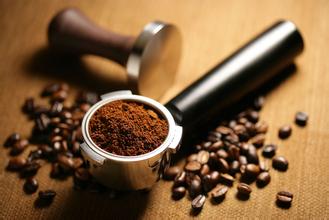Introduction to the brief History of Coffee in Indonesia
A Brief History of Coffee
In 1696, the Dutch viceroy in Malabar, India, sent a batch of coffee seedlings to the Dutch viceroy in Batavia (present-day Jakarta Jarkata), the first coffee cultivation in Indonesia. However, the first batch of coffee seedlings were washed away by floods. Batavia received gifts again in 1699, this time the coffee seedlings survived and the first harvest was ushered in 1701, starting the coffee journey in Indonesia.
Initially, coffee was grown in Jakarta and nearby areas, and later, the cultivation area gradually expanded to central and eastern Java, Sulawesi, Sumatra and Bali. At the same time, coffee was also grown in Flores and Timor, which were then part of Portugal territory, in eastern Indonesia, but the origins of coffee seedlings were different.
Indonesian coffee was supplied to the European market in 1711, when Indonesia was the first country outside Africa and Arabia to grow coffee on a large scale. In the 1780s it became the world's largest coffee exporter. Java coffee started here.
Indonesia's coffee boom failed to last, and coffee production was fatally hit in the late 18th century when leaf rust, first discovered in West Java, spread rapidly and destroyed Indonesia's Arabica coffee plantations. The leadership of the coffee trade was replaced by the American-producing countries. however, it is worth mention that this leaf rust disaster did not affect that eastern Indonesian producing region, namely Flores and Timor, where some coffee trees have genes date back to the 16th and 17th centuries.
According to ICO data, Indonesia ranked third in the world in coffee production in 2013, although 80% of it was Robusta.
country profiles
Indonesia, the "land of thousands", is the country with the most islands in the world.
When it comes to Indonesia, the most familiar is probably the resort island of Bali.

Important Notice :
前街咖啡 FrontStreet Coffee has moved to new addredd:
FrontStreet Coffee Address: 315,Donghua East Road,GuangZhou
Tel:020 38364473
- Prev

The historical characteristics of mocha coffee beans and their taste
1. Taste: slightly sweet with soft acidity, sweetness has its unique round ripe taste and its unique sweet, sour and bitter taste is extremely elegant. 2. Fragrance: full-bodied aromas of fruit and grass. 3. Vision: the characteristics of mocha coffee with small bean particles and uneven bean color Ethiopia, known as the birthplace of coffee, has a history of coffee origin and traditional agricultural countries.
- Next

How are coffee sales in Papua New Guinea?
Papua New Guinea Papua New Guinea, also known as Papua New Guinea Papua New Guinea. Papua New Guinea coffee is the second largest agricultural export project in Papua New Guinea, accounting for 18 percent of the total agricultural exports in 2003. The country's coffee industry developed to a certain extent in the 1990s, with exports reaching 500 million kina in 1998, due to world prices.
Related
- Does Rose Summer choose Blue, Green or Red? Detailed explanation of Rose Summer Coffee plots and Classification in Panamanian Jade Manor
- What is the difference between the origin, producing area, processing plant, cooperative and manor of coffee beans?
- How fine does the espresso powder fit? how to grind the espresso?
- Sca coffee roasting degree color card coffee roasting degree 8 roasting color values what do you mean?
- The practice of lattes: how to make lattes at home
- Introduction to Indonesian Fine Coffee beans-- Java Coffee producing area of Indonesian Arabica Coffee
- How much will the flavor of light and medium roasted rose summer be expressed? What baking level is rose summer suitable for?
- Introduction to the characteristics of washing, sun-drying or wet-planing coffee commonly used in Mantenin, Indonesia
- Price characteristics of Arabica Coffee Bean Starbucks introduction to Manning Coffee Bean Taste producing area Variety Manor
- What is the authentic Yega flavor? What are the flavor characteristics of the really excellent Yejasuffi coffee beans?

